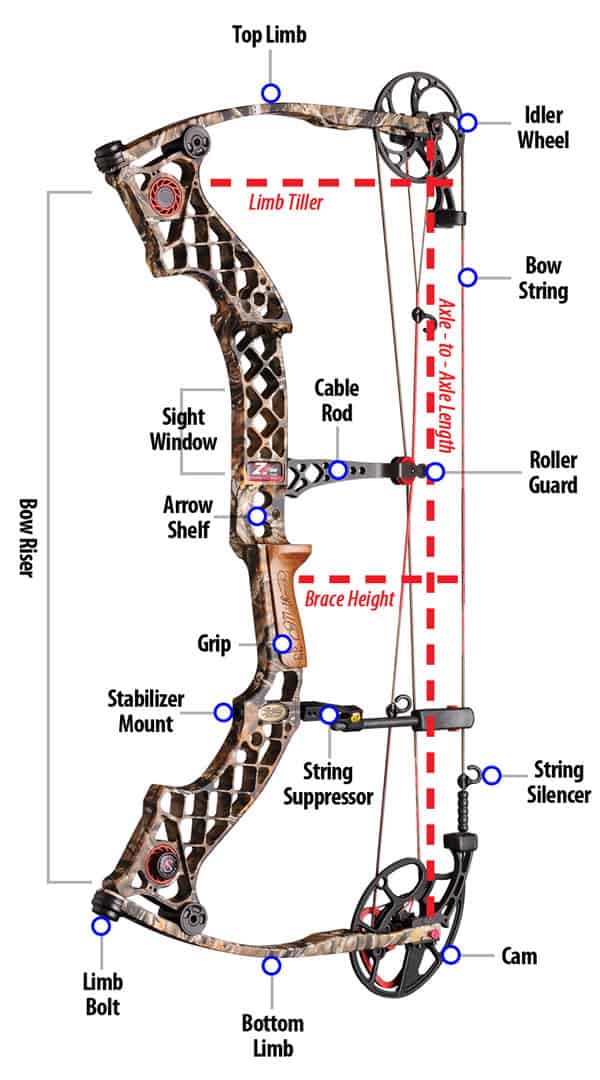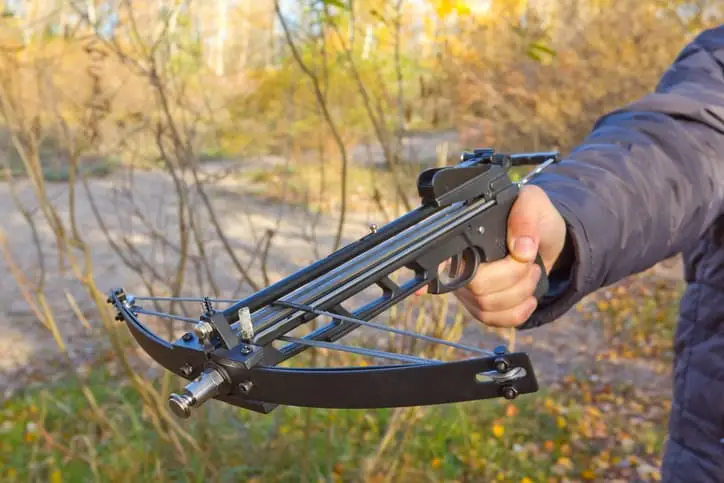Note: Our site links to archery and bowhunting products sold by outside vendors, and we may earn a small commission if you purchase an item after clicking one of these links. Learn more about our affiliate program.
There are so many crossbow options. Lets narrow down those choices! Recurve vs compound crossbows. We break down the differences and which works best for you.
Recurve Crossbows
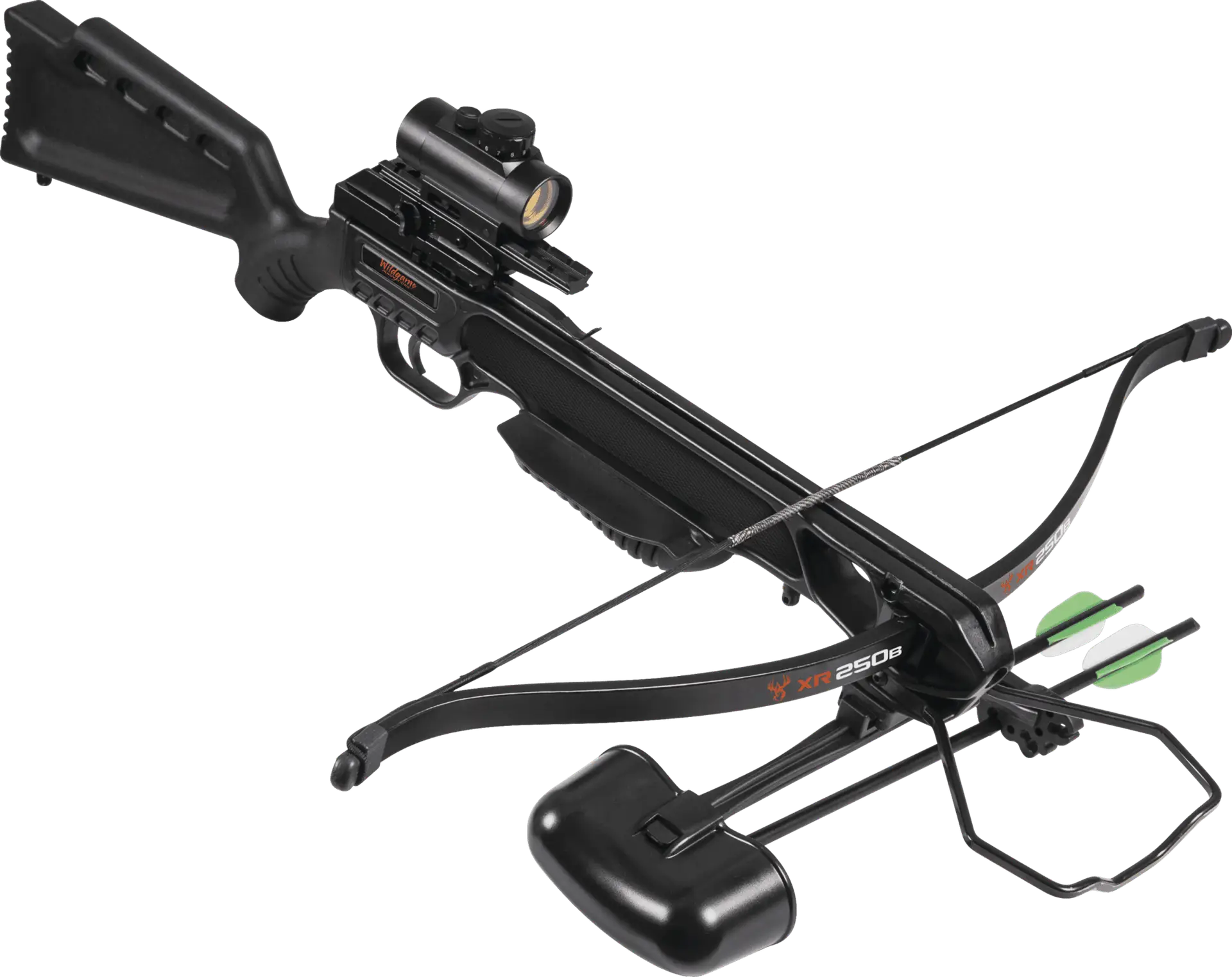
Overview—What It Is, and What Makes It Unique
Recurve crossbows are the most basic type of crossbow. They feature two limbs mounted horizontally on a stock and barrel. They get their name from the unique shape of the limbs, which curve away from the front of the bow but then recurve back toward it in a sort of S shape..
The curves make the limbs act as highly powerful springs that launch the bowstring and therefore the bolt at high speeds. Recurve crossbows are usually very large and very powerful with speeds sometimes over 400 FPS (feet per second). This is achieved with minimal mechanical complexity. There are no extra cables or cams.
Strengths of Recurve Crossbows
Reliability: Because of their simple design, recurve crossbows are much more reliable. Serious archers and frequent bowhunters may take thousands of shots over the life of their crossbow, and this can lead to wear and tear. With no complex mechanisms, a recurve is less likely to suddenly break down in the field, and if it does, it’s much easier to fix. For example, restringing a recurve is much easier. Many times you can even do basic maintenance yourself without having to take it into a shop.
Light weight: Recurve crossbows are lighter despite being larger. This is because there isn’t much too them besides the limbs and bowstring. For this reason, survivalists and still hunters prefer them since they can carry them long distances over multi-day hunts.
Steadier: Many archers find recurve crossbows easier to aim. This is mostly due to their lighter weight. They’re easier to hold steady, and you can bring them to bear much faster.
Style: Both target shooters and hunters sometimes simply prefer the look of a recurve. It’s classic and stylish. It also provides a rewarding challenge since many people feel they have too much of an advantage with more technologically advanced bows.
Disadvantages of Recurve Crossbows
Large and wide: Their larger size means recurve crossbows are much less agile and maneuverable. If you’re hunting in dense woods, it can also mean more noise when moving around.
Less power: Recurve crossbows are very powerful, certainly more powerful than many vertical bows people use on a regular basis to take down large game. Still, they don’t reach the same speed and kinetic energy as the most powerful models of more technologically advanced bows. This means you have to practice a bit more to be proficient with them, and they aren’t quite as accurate.
Heavy draw weight: Recurve crossbows are much more difficult to draw. Basic compound crossbows and other technologically advanced crossbows provide a “let-off” which decreases some of the draw weight towards the end of the draw. In other words, you can load them more quickly. For target shooters, this doesn’t matter much, but it can make a big difference for hunters. Similarly, the heavier draw weight at full draw can decrease the life of your latch and trigger.
Compound Crossbows
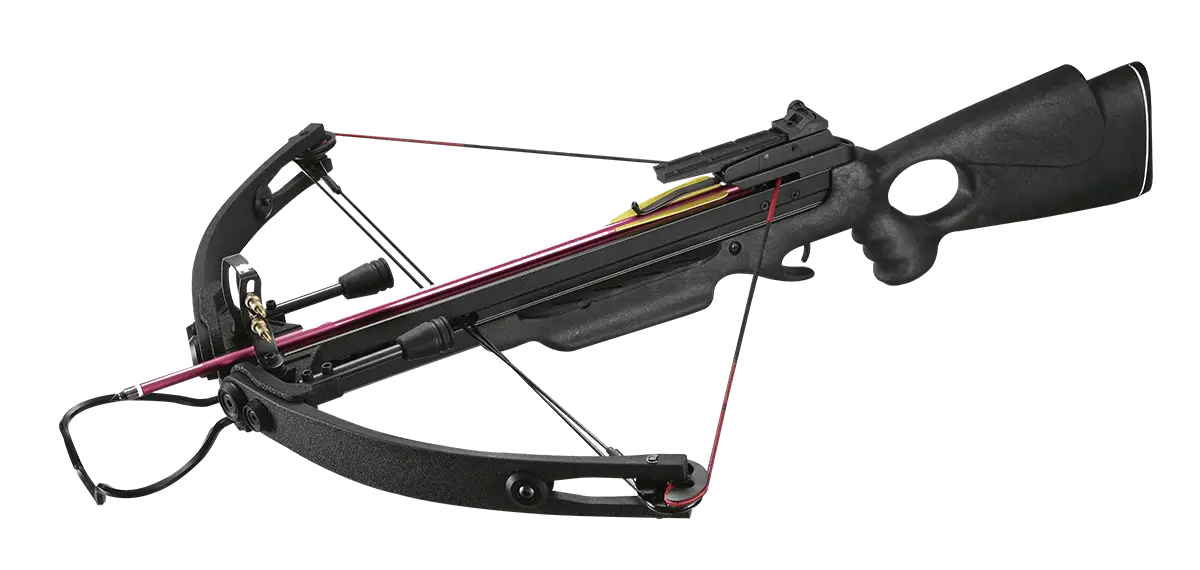
Overview—What It Is, and What Makes It Unique
Compound crossbows use compound pulley systems called cams to get more power from the crossbow with less limb length. There are numerous different designs, but they all utilize the same mechanical principle.
The cam system consists of a large pulley connected to the bowstring. When you draw the bowstring, it rotates the pulley. This rotates a small pulley attached to the larger one. In physics, energy is force multiplied by distance. The smaller pulley receives the same amount of energy as the large one but travels less distance, so that means more force. This force is then stored in a cable system.
Compound crossbows get an incredible amount of speed out of their cam systems. Some are even able to reach 470 FPS.
Strengths of Compound Crossbows
Speed and power: First and foremost, while there is some overlap, all the fastest crossbow models are compounds. The cam systems can pack a lot of power into a small frame. More power and speed increases your chances of taking down big game. It also improves accuracy.
Low limb length: Compound crossbows are more compact. They have much shorter limbs, which is made up for by the cam system. As a result, you can move them around much more agily. You’re less likely to make noise rustling around in the brush. You can also store them or set them up in a treestand more easily.
Easier to draw: The cam system of a compound crossbow produces “let-off” which decreases the draw weight at the end of the draw. In other words, when you pull the bowstring back, it starts to become less difficult towards the end. Most importantly, this means you can reload faster. It also can save your latch and trigger from wear and tear.
Disadvantages of Compound Crossbows
Weight: The added mechanisms make compound crossbows heavier. In some ways, this cancels out their improved accuracy due to speed because they’re more difficult to hold steady. They can also become a burden on long, multi-day hunting trips.
Maintenance: Compound crossbows are more mechanically complex, so it makes sense that they take more maintenance. They’re also less reliable and more likely to break down in the middle of shooting. This is especially true with regards to the bowstring. You have to have a bow press to replace it if it breaks. This is a problem for target shooters and bowhunters alike.
Noise: All the mechanisms in a compound crossbow make a lot of noise. Plus, they are additional pieces that can vibrate from the shock and recoil of the bowstring. As a result, they require numerous accessories to dampen the noise, and they can still scare away animals in a wide radius.
Recurve Crossbows vs Compound Crossbows for Hunting
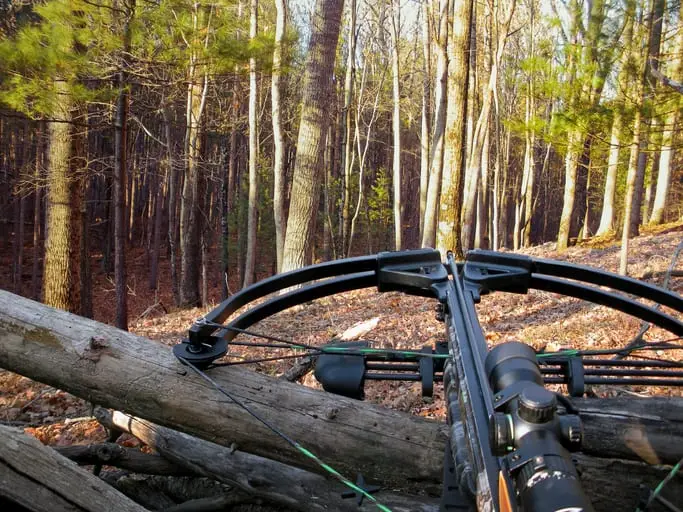
Each hunter is different. They have different needs, tastes and abilities, so it’s impossible to say either the recurve crossbow or compound crossbow is absolutely better for hunting. Either may be the better choice for someone depending on their situation.
For example, despite the compound crossbow’s greater speed and power, many big-game hunters and extreme hunting enthusiasts choose the recurve crossbow. That’s because one of the things they enjoy most about the hunt is the challenge. The recurve means they need that much more skill, and it makes the kill that much more rewarding. Plus, those extreme hunters who go on multi-day trips in the dense wilderness prefer the lightweight and reliability of the recurve bow.
On the other hand, if you go hunting just a couple of times a season, that reliability and low maintenance isn’t as important. Instead, you probably want to be able to go out and have a successful hunt without having to dedicate too much of your time to honing your skills. The advanced technology and superior accuracy of the compound may serve you better in that case. Now, that isn’t to say you can’t use a compound crossbow on long hunts for big game as well. In fact, it may increase your chances of success because of the higher speed and power.
Of course, you have to consider all the other factors as well. Are you hunting in dense forest? If so, the compactness of a compound crossbow can help keep your noise down. Of course, the compound crossbow shot is noisier in and of itself, so are you confident you can get your quarry with one bolt? Otherwise, you may scare off all the game around.
Similarly, cocking a recurve crossbow is much more of an ordeal. Do you expect to take many shots while hunting? Are you a large man or a slight woman? This could determine whether you want to deal with the recurve’s heavier draw weight.
Wrapping Up
As you can see, any bowhunter will have so many personal factors come into play that there’s no right answer. You need to consider your own abilities, the area you’re hunting and even just your personal tastes. Both recurve and compound crossbows are efficient, effective weapons. In the end, the choice is up to you.



